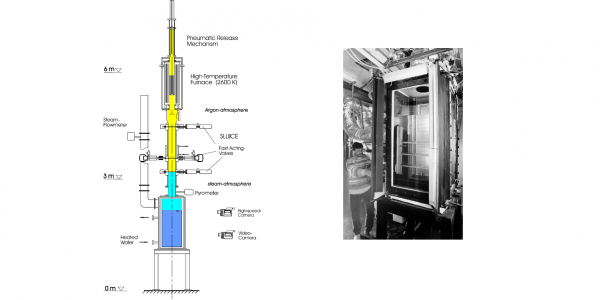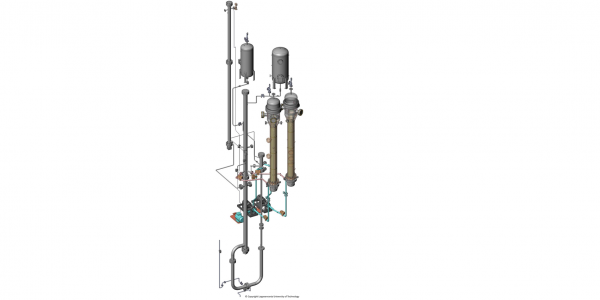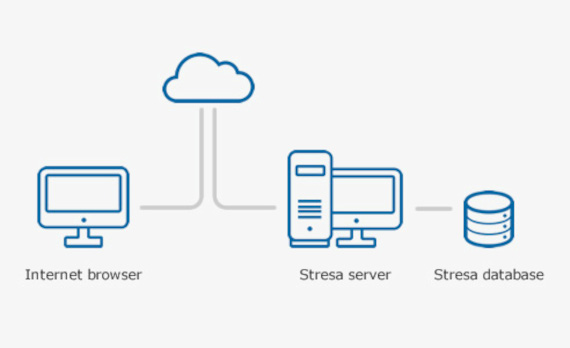The MISTRA facility is a steel cylindrical vessel with a top flat cap and a curved bottom. The internal volume is 99.5m3, the internal diameter - 4.25m, the height - 7.4m. The vessel is thermally insulated, but the wall temperature is not controlled. Three cylindrical condensers are inserted inside the vessel, close to the wall and one above the other (so that they span over most of the vessel height). The facility is designed in such a way that almost all steam condensation is supposed to occur on the interior side of the condensers. The facility was additionally equipped with sprays located below the vessel ceiling. The instrumentation includes devices for measuring pressure, temperature, gas concentration and velocity (laser Doppler anemometry).











